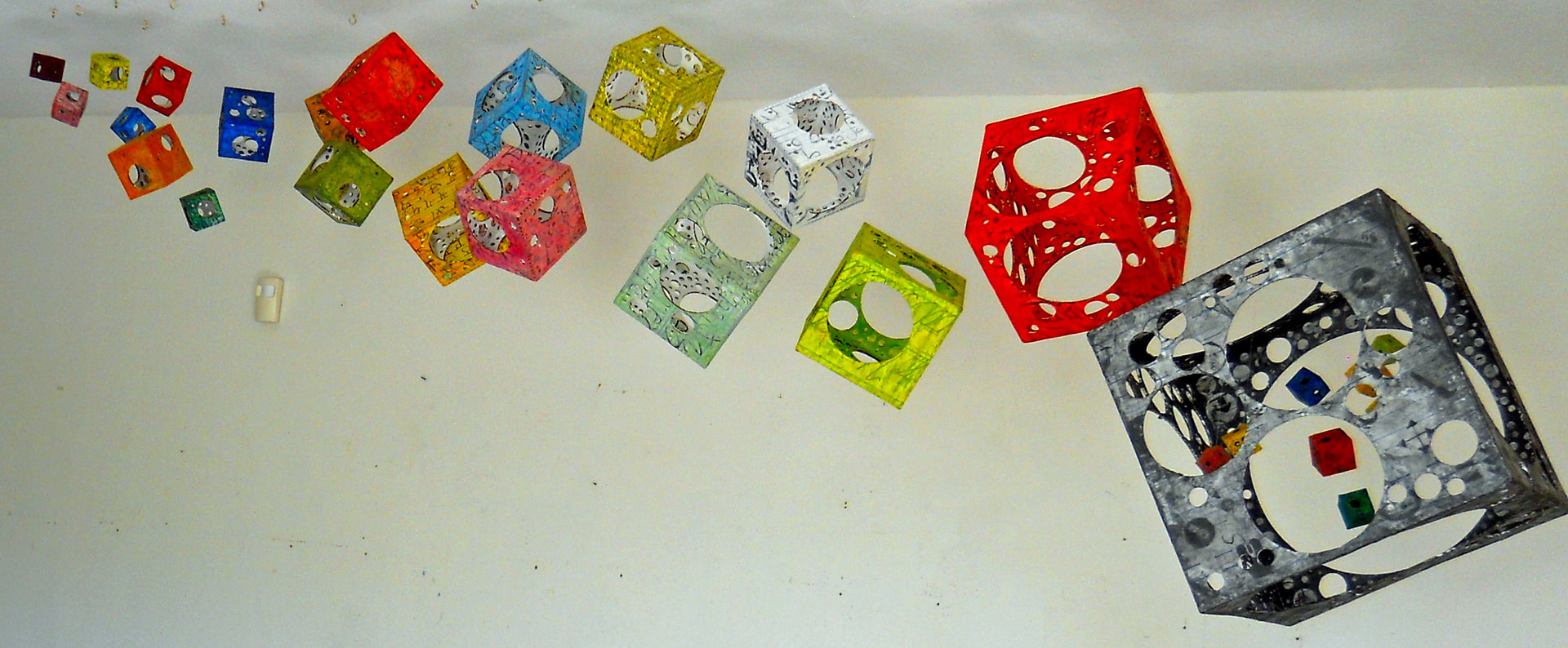"Assimilation" address the homogenization and loss of written language as "last speakers" die off and “keyboard proficiency” replaces cursive writing. The cardboard blocks each depict one of 20 languages which are the mother tongue of half the world's population. Mandarin Chinese, Spanish, and English are the most spoken, with Vietnamese and Urdu the least in this ranking. The large grey block in the piece represents technology, which is in the process of consuming all the smaller blocks.
According to Judith Thurman, writing in the March 30, 2015 issue of The New Yorker, English remains the lingua franca of the digital age. Interestingly, those who speak and write it as a second language may already outnumber its native speakers by hundreds of millions. In her “A Loss for Words” article, Thurman notes: ...“the loss of languages passed down for millennia, along with their unique arts and cosmologies may have consequences that won’t be understood until it is too late to reverse them.” Thurman calls these languages “a user’s guide to ecosystems that are increasingly fragile and --in the face of climate change--increasingly irreplaceable.” She describes the “discovery” of remedies like quinine, aspirin, and codeine by ethnobotanists, who were guided and informed by indigenous peoples, none of whom enjoyed the subsequent profits from such “bio prospecting.”
But there are other reasons to care about language loss. On Native America Calling, a public radio program broadcast in our market Monday - Friday at 11:00 AM, one caller observed: “When an elder dies, an entire encyclopedia vanishes.” Because language embodies culture, it is a vital part of a person’s identity. It’s loss deprives us of alternative ways of viewing the world. It erases knowledge of alternative values. As one Mohawk speaker pointed out, his language incorporates ‘longhouse values,’ such as reverence for nature, parents, and ancestral spirits. “Mohawk isn’t just a form of speech,” he said. “It’s a holistic relationship to the cosmos.”
Here in New Mexico indigenous peoples have an added challenge: trying to preserve languages that were never written. The Navajo Nation recently persuaded Disney Enterprises to dub Star Wars in Diné Bizaad, the Navajo language. Star Wars had already been translated into 34 languages and nominated for a Best Picture Academy Award in 1977 when efforts began to add Navajo to the list. Credited for success are the Navajo Nation Museum and Manuelito Wheeler, a department manager. Wheeler identified watching a movie as an experience that would resonate with large numbers of his people. He spent 13 years thinking about which film would be appropriate, before selecting Star Wars and working to make it happen.
My Native tongue--English-- faces a different challenge: the homogenization of its written form as“keyboard proficiency” replaces cursive writing. As a visual artist I have to wonder what are the implications for artists, who have always relied on mark making as part of their craft? Is mark making being replaced by computer generated symbols? What is lost as this happens?
"Assimilation" is part of the Encaustic Art Institute's permanent collection. The Institute is in Santa Fe, New Mexico.
